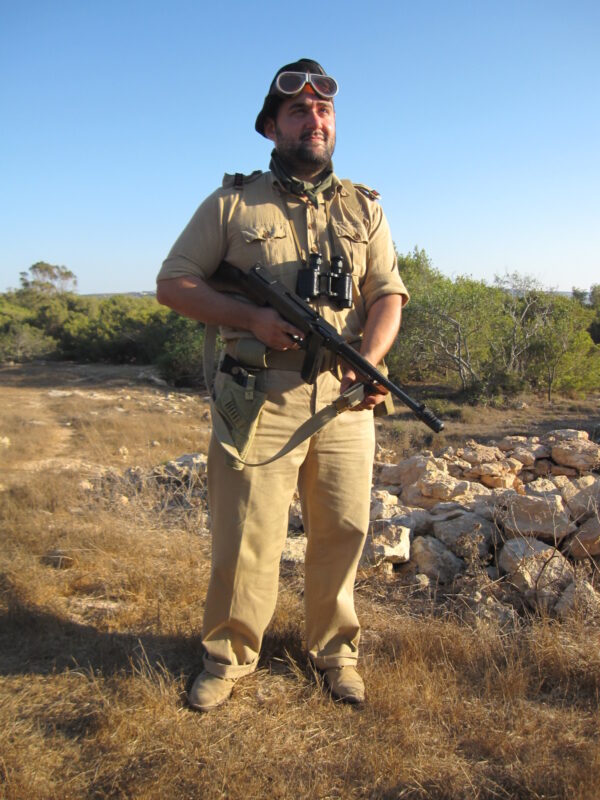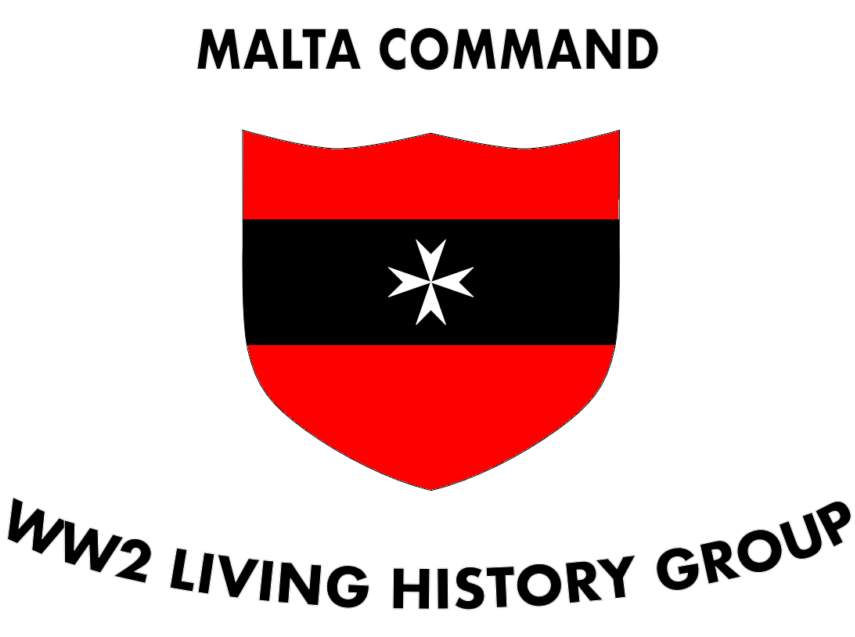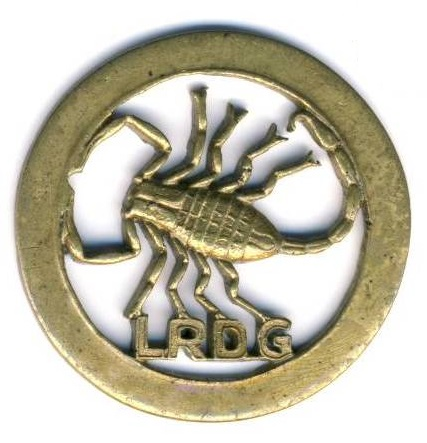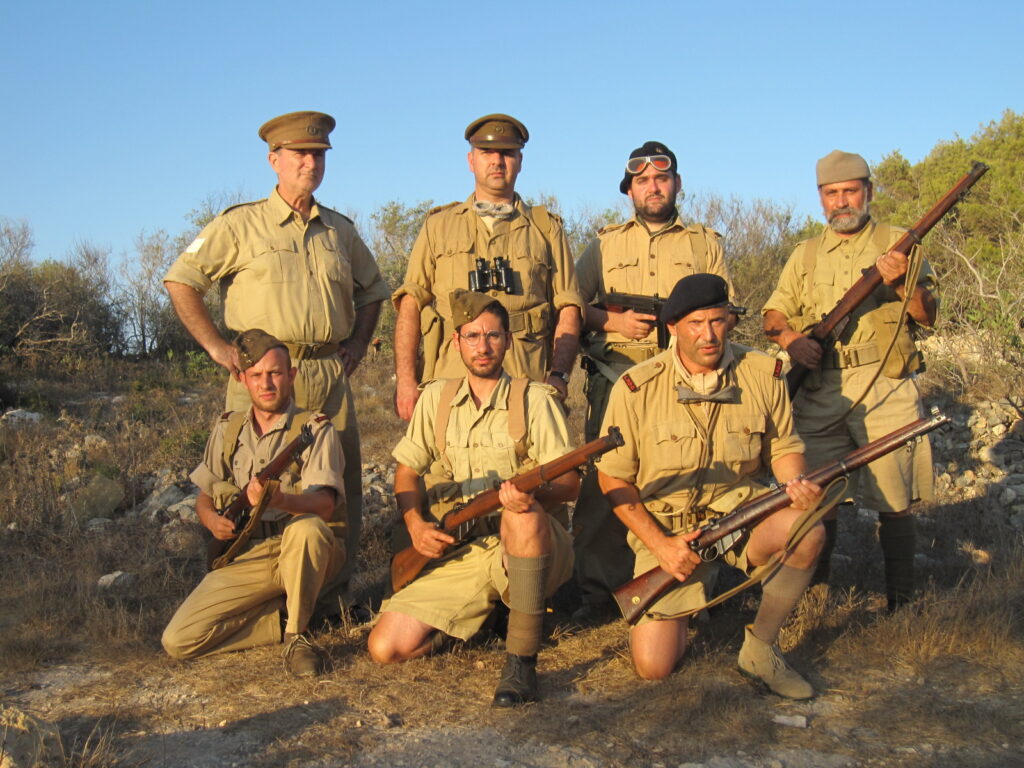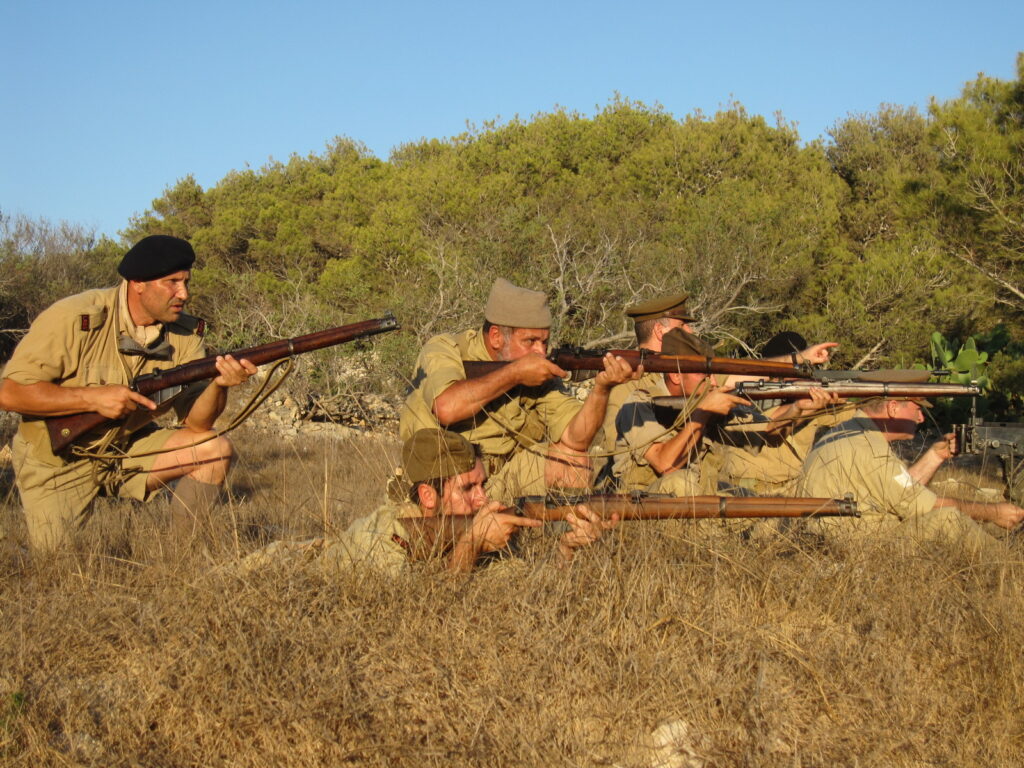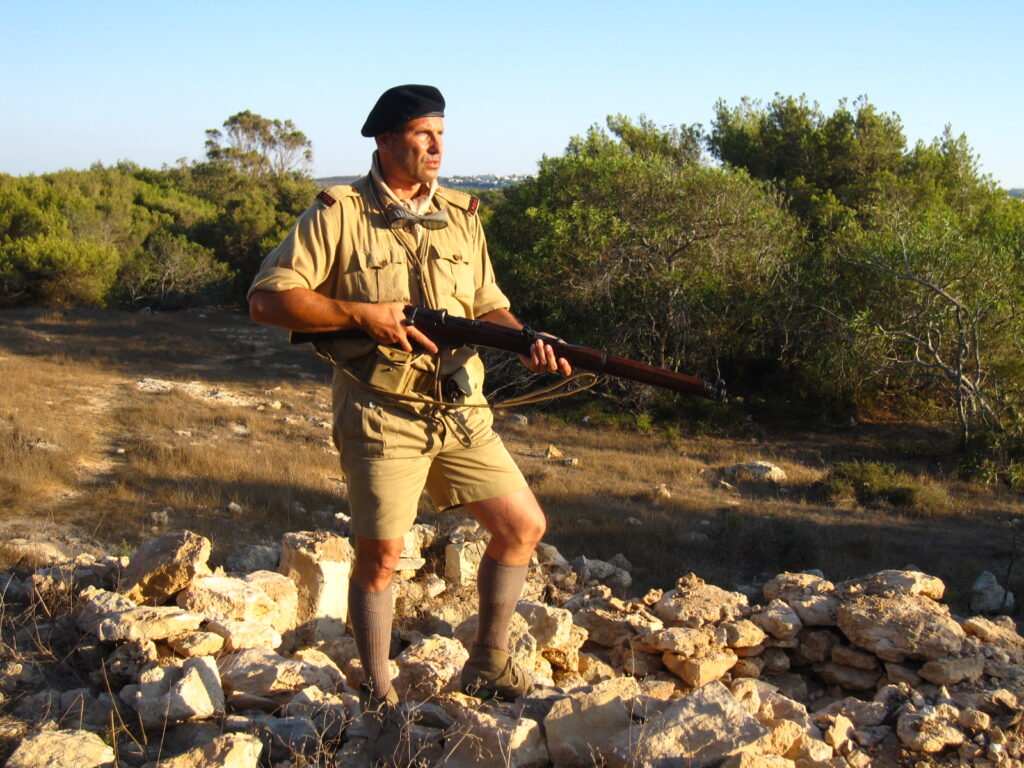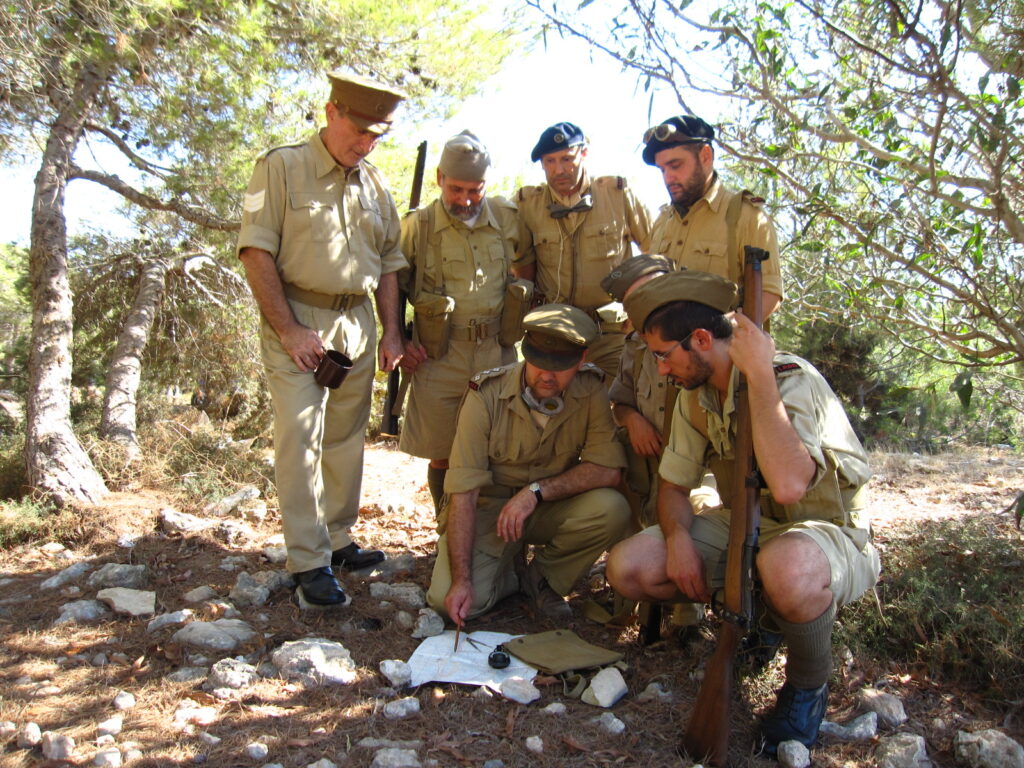The Long Range Desert Group (LRDG) was a reconnaissance and raiding unit of the British Army during the Second World War.
Originally called the Long Range Patrol (LRP), the unit was founded in Egypt in June 1940 by Major Ralph A. Bagnold, acting under the direction of General Archibald Wavell. Bagnold was assisted by Captain Patrick Clayton and Captain William Shaw. At first the majority of the men were from New Zealand, but they were soon joined by Rhodesian and British volunteers, whereupon new sub-units were formed and the name was changed to the better-known Long Range Desert Group (LRDG). The LRDG never numbered more than 350 men, all of whom were volunteers.
The LRDG was formed specifically to carry out deep penetration, covert reconnaissance patrols and intelligence missions from behind Italian lines, although they sometimes engaged in combat operations. Because the LRDG were experts in desert navigation they were sometimes assigned to guide other units, including the Special Air Service and secret agents across the desert. During the Desert Campaign between December 1940 and April 1943, the vehicles of the LRDG operated constantly behind the Axis lines, missing a total of only 15 days during the entire period. Possibly their most notable offensive action was during Operation Caravan, an attack on the town of Barce and its associated airfield, on the night of 13 September 1942. However, their most vital role was the ‘Road Watch’, during which they clandestinely monitored traffic on the main road from Tripoli to Benghazi, transmitting the intelligence to British Army Headquarters.
With the surrender of the Axis forces in Tunisia in May 1943, the LRDG changed roles and moved operations to the eastern Mediterranean, carrying out missions in the Greek islands, Italy and the Balkans. After the end of the war in Europe, the leaders of the LRDG made a request to the War Office for the unit to be transferred to the Far East to conduct operations against the Japanese Empire. The request was declined and the LRDG was disbanded in August 1945.
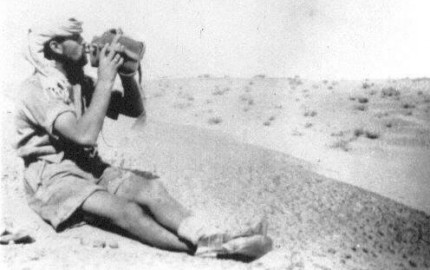
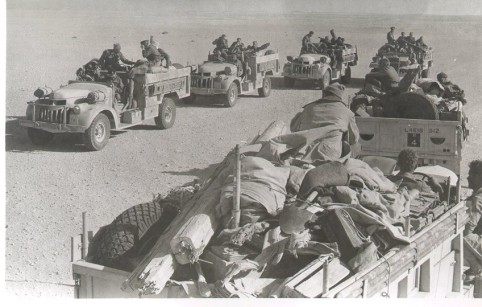
Primary Missions of the LRDG

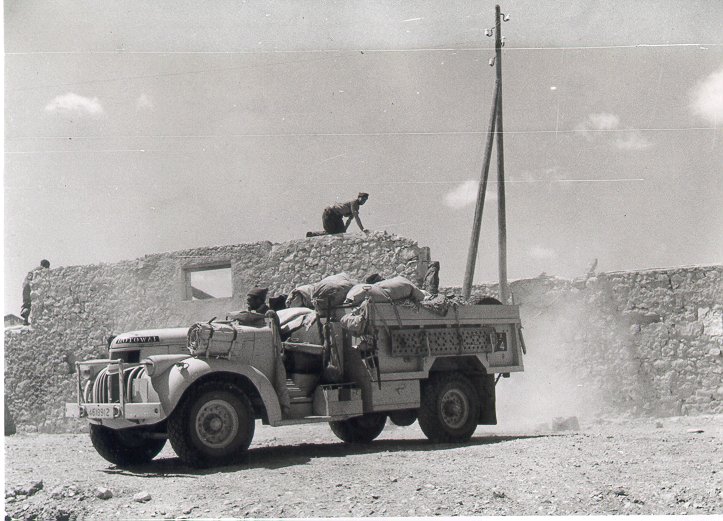
Patrol Structure
Upon inception of the LRDG in August 1940 (the unit was actually called LRP (Long Range Patrol) at that time), the unit consisted of a HQ staff, Heavy Section (which was called “Marmon Herrington Party” until being renamed in December) and three patrols:
- R Patrol (New Zealand)
- T Patrol (New Zealand)
- W Patrol (New Zealand)
In December, 1940, W Patrol was disbanded due to most of its members being relocated to Greece, and LRP was re-organised and subsequently renamed LRDG. In the process of re-organisation, a new Patrol was added in December and two more in January for the final makeup of five patrols:
- G Patrol (Coldsteam guards, added December 1940)
- R Patrol (New Zealand)
- S Patrol (Rhodesians)
- T Patrol (New Zealand)
- Y Patrol (Yeomanry)
Summer 1941 saw the addition of a temporary H Patrol to take up the remainders of the heavily battle-scarred Y and G patrols, which both were subsequently reformed. At the same time, a number of sections (Signals, Air, Survey, Light Repair and the short-lived Royal Artillery)were attached to HQ.
LRDG’s Patrols were subsequently reorganized into two half patrols (Autumn 1941), the various sections attached to HQ were restructured several times (most notably, Light Repair was promoted to a squadron in 1941, Air and Survey Sections were merged into one section in 1942). Late in 1942, LRDG had another short-lived subsection called the “No.1 Demolition Squadron”; this squadron soon left LRDG and followed their own path under the name “Popski’s Private Army”.

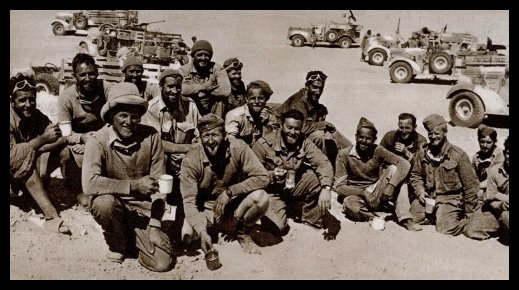
Equipment
Vehicles
The LRDG vehicles were mainly two wheel drive, chosen because they were lighter and used less fuel than four wheel drive. They were stripped of all non-essentials, including doors, windscreens and roofs. They were fitted with a bigger radiator, a condenser system, built up leaf springs for the harsh terrain, wide, low pressure desert tyres, sand mats and channels, plus map containers and a sun compass devised by Bagnold. Wireless trucks had special compartments built into the bodywork to house wireless radio equipment. Initially the LRDG patrols were equipped with one CMP Ford 15 cwt F15 truck for the commander, while the rest of the patrol used up to 10 Chevrolet 30 cwt WB trucks. From March 1941 the 30 cwt Chevrolets were replaced by the CMP Ford 30 cwt F30, although in some ways this was a retrograde step; because they were four wheel drive and heavier than the Chevrolets, they used twice as much fuel, which in turn reduced the range of a patrol. From March 1942 the Fords were progressively replaced by 200 Canadian Chevrolet 1533 X2 30 cwts which had been specially ordered for the LRDG. From July 1942 Willys Jeeps began to be issued for the patrol commander and patrol sergeant.
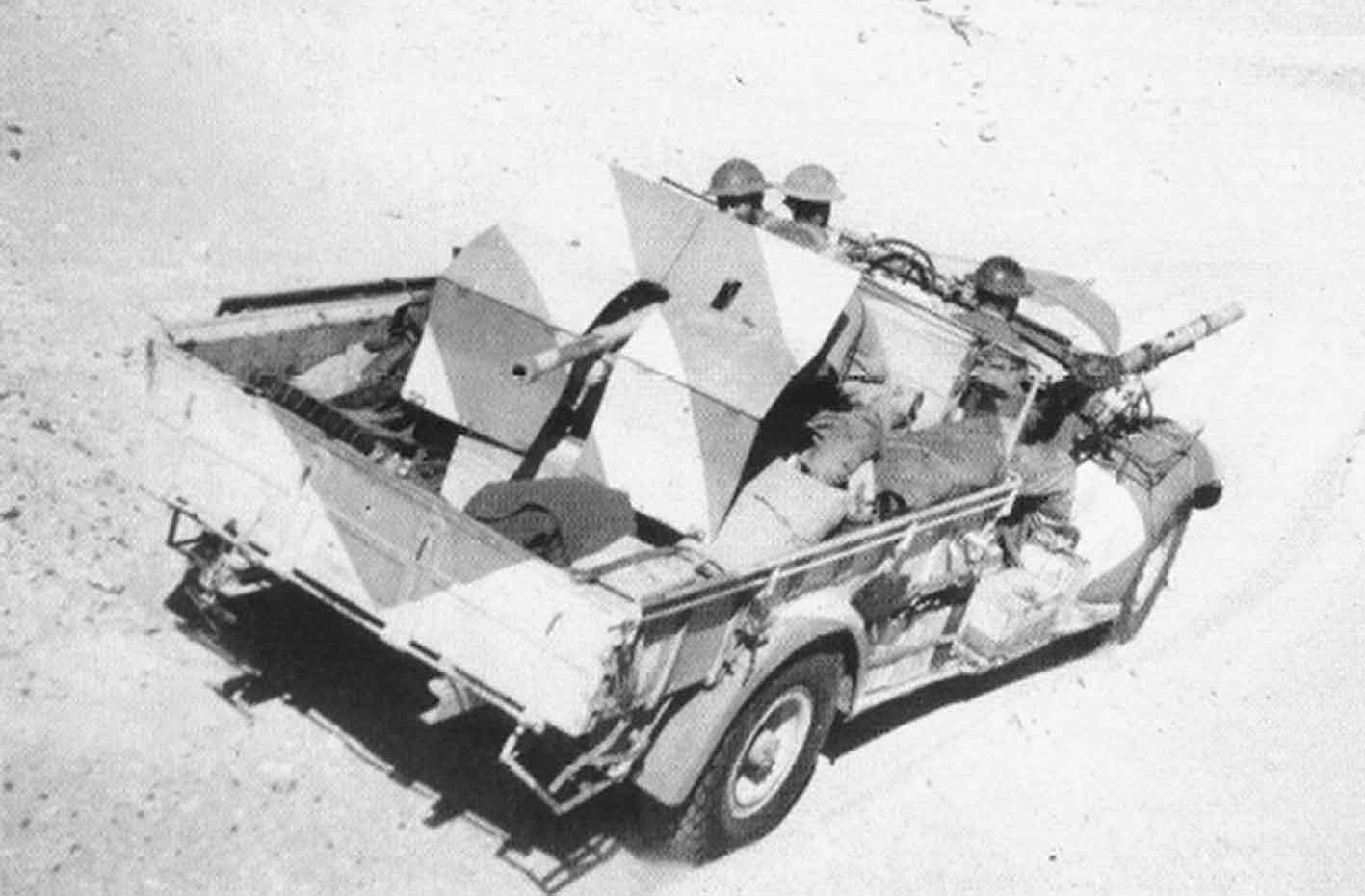
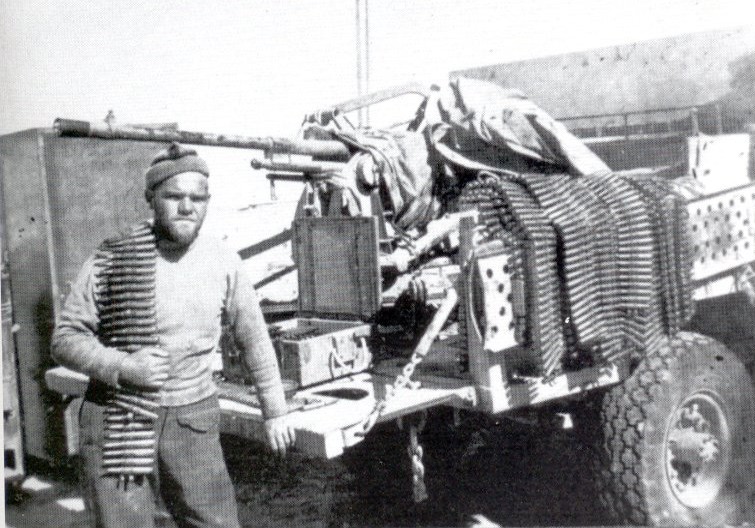
Weapons
The patrol vehicles were initially armed with 11 Lewis machine guns , four Boys anti-tank rifles and a Bofors 37mm anti-tank gun distributed amongst their vehicles. By December 1940, the vehicle armaments had been improved and ‘T’ Patrol, for example, had five .303 Vickers Mk. I Medium machine guns, five Lewis guns, four Boys anti-tank guns and the Bofors 37 mm. Another Vickers gun used was the heavy Vickers .50 machine gun, which would be mounted at the rear of the vehicle. All of the unit’s vehicles were armed with at least one gun; each vehicle was fitted with six to eight gun mountings, but normally only two or three of them would be in use.Supplementing their army-supplied weapons, the LRDG was equipped with surplus Royal Air Force weapons. The most widely used of these was the Vickers K machine gun ,which was sometimes used mounted in pairs. From mid-1941 the LRDG acquired .303 Browning Mk II’s from RAF stocks, also mounted in pairs, with a combined rate of fire of 2,400 rounds per minute. When new vehicles were issued in March 1942, several were converted to carry captured dual-purpose 20 mm Breda Model 35s , which replaced the Bofors 37 mm, and each half-patrol was equipped with one Breda “Gun truck”. In September 1942 the .50 Browning AN/M2 heavy machine gun began to replace both calibres of the Vickers machine guns and the Boys anti-tank rifle.
The men of the LRDG carried the standard British Second World War small arms, the SMLE No.1 Mk III* being the primary rifle. Other small arms carried were Thompson submachine guns and .38 Enfields and Webleys or .45 Colt 1911A1 pistols. Several types of hand grenade were used: the Mills grenade , No. 68 Anti-tank and No. 69’s . Each truck carried a Lee-Enfield EY rifle fitted with a discharger cup able to fire the No.36 Mills grenade. The LRDG also laid land mines, the most common being the Mk. 2 mine. Lewes bombs, a custom made weapon using Nobel 808 plastic explosive, were used to destroy aircraft and other targets.
Captured German and Italian small arms were utilised including the Beretta M 1934, Luger P08 and Walther P38 pistols. The German MP40 submachine gun and MG34, MG42 along with Italian Breda M37 and Breda M38 machine guns were also used.
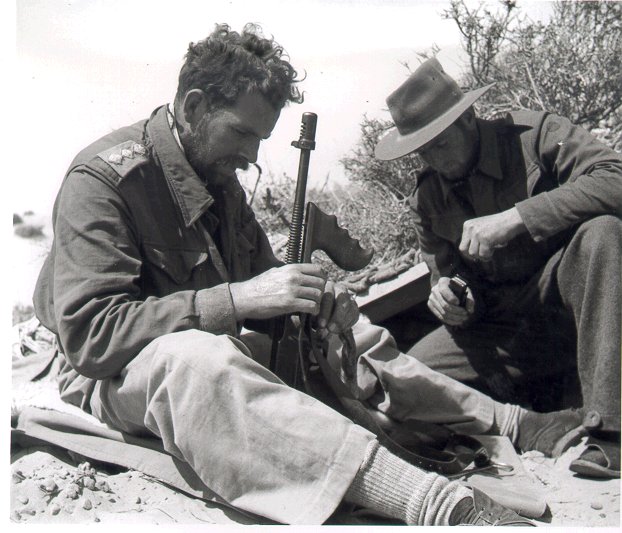
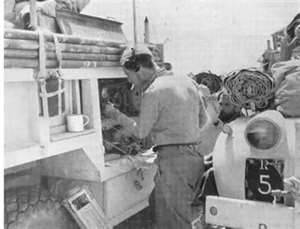
Communications
In the LRP most of the radio operators were New Zealanders, but the LRDG radio operators were all from the Royal Corps of Signals. These men were skilled in communications and were able to maintain and repair their equipment without any outside help. On only three occasions did a broken radio prevent a patrol communicating with its headquarters. All LRDG patrols included one vehicle equipped with a Wireless Set No. 11 and a non-military Philips model 635 receiver.
No. 11 Radio Set – The British No.11 Radio set was standard equipment for LRDG’s wireless trucks. Standard operational range for voice transmission for this set was 15 miles; using morse code and an external antenna, communication over distances of several hundred miles could be achieved. The largest recorded distance of an LRDG patrol using a No.11 set was 1500 miles.
LRDG patrols used the Wyndon Aerial which consisted of a wire of variable length stretched between two poles. Wireless trucks can easily be identified on photos by the disassembled poles mounted to the side of the vehicle.

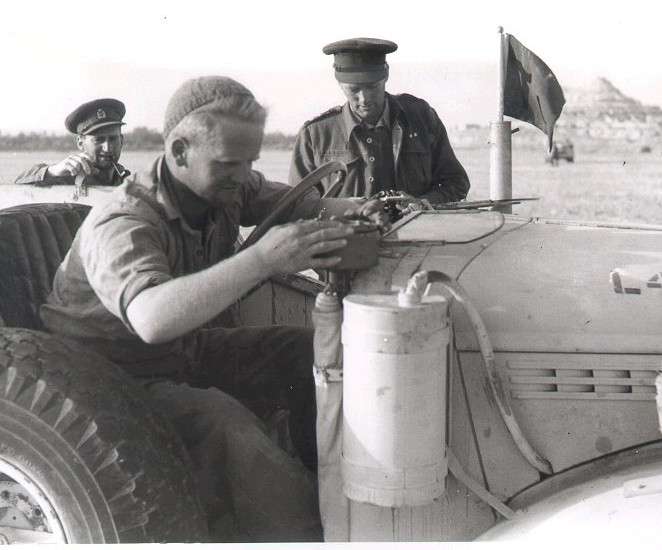
Navigation
Due to the influences of the vehicle moving about and the car’s metal parts, navigation by magnetic compass while driving in a car is comparatively inaccurate. While this effect is easily corrected by checking against landscape features like mountains, rivers etc., the absence of such features in desert terrain made magnetic compasses almost totally useless for LRDG units. Therefore all trucks of the LRDG were equipped with the Bagnold sun compass which basically records the sun’s position and gives the direction according to the current time of day. Some trucks were also equipped with a P8 Tank Compass. Each patrol had a navigator who always rode in the second truck in the formation. He was equipped with a theodolite and astronomical position tables with which to plot star sightings and maps. Watches were used and adjusted each evening using the GMT time check. One major problem faced early on by the LRDG was a lack of accurate maps for Libya in particular. Patrols had to do their own surveys and make their own maps of each route they took. In July 1941 the Survey Section was formed to carry out this task.
Individual Equipment & Special Issue Uniforms
Volunteers joining the LRDG came with the uniforms and equipment of their parent unit. As such, New Zealand, South African, and British uniforms intermixed as well as the uniforms of the Royal Tank Regiment, REME, Signal Corp, Yeomanry, and Guards units. Considering all the options, Khaki Drill (KD) and Battle Dress (BD) were never a “standard”.
To complicate matters, troopers dressed as they felt appropriate for the mission at hand.
However when joining the LRDG each trooper was issued the following equipment:
- Arab Head-dress: While the traditional Arab head-dress consists of three parts: Thagiyah a tight fitting white skullcap, the flowing white head covering called Gutrah, and a black chorded band called an Igal, the LRDG issued a sand colored Gutrah and the black Igal. It is unclear if the Thagiyah was issued.
- Motorcyclist/Tank
- Sunglasses
- Tropal coat, a heavy kapok lined overcoat.
- The Hebron Coat, a shaggy goat skinned coat, locally acquired.
- Chapplies (Desert sandals)
It should be noted that Bagnold obtained the Arab head-dress and hebron coat from the stores of the Trans Jordan Frontier Force.
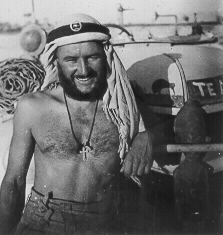
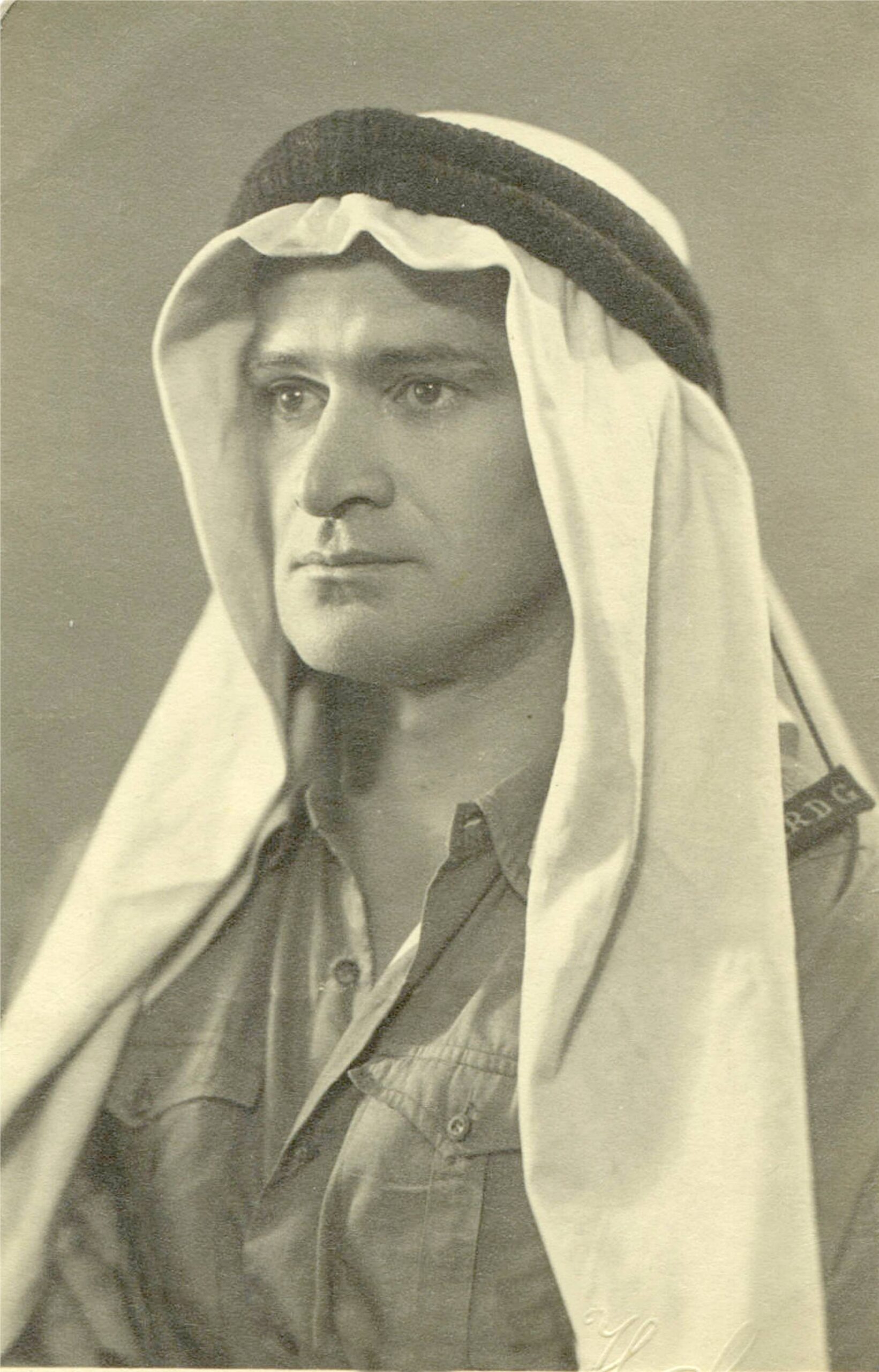
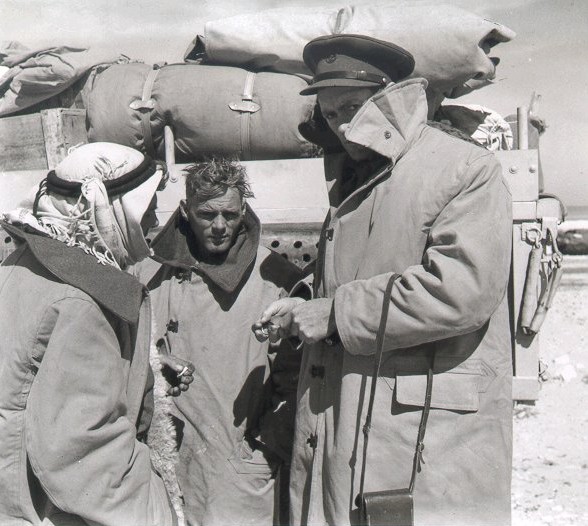
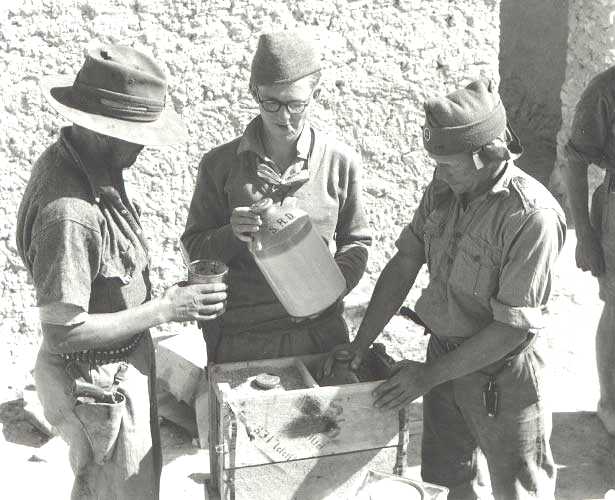
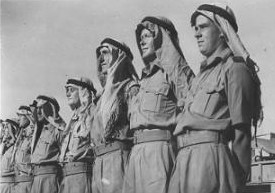
Officers Commanding, LRDG
- Ralph Alger Bagnold, OBE; Commander LRDG: 4 September 1940 – November 1941.
- Guy L. Prendergast, DSO; Commander LRDG: November 1941 – October 1943.
- John Richard “Jake” Easonsmith, DSO, MC; Commander LRDG: October 1943 – 16 November 1943.
- David L. Lloyd Owen, DSO, OBE, MC; Commander LRDG: 16 November 1943 – End of War/ Disbandment.

